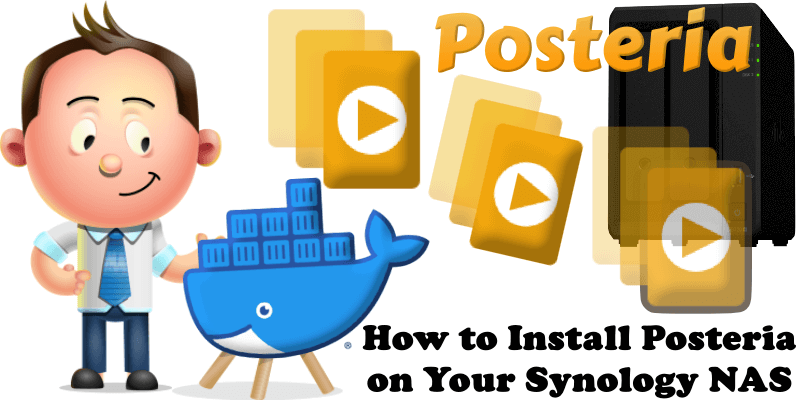
Posteria is a web-based media poster management app designed to organize and store custom posters for movies, TV shows, seasons, and collections. It features a clean, modern interface and integrates with Plex Media Server, allowing users to import posters directly and sync customized artwork back securely using a Plex authentication token. Built as a responsive Progressive Web App (PWA), Posteria works seamlessly across devices and supports automatic poster fetching from sources like The Movie Database (TMDB), The TV Database (TVDB), and FanarTV. In this step by step guide I will show you how to install Posteria on your Synology NAS using Docker & Portainer.
STEP 1
Please Support My work by Making a Donation.
STEP 2
Install Portainer using my step by step guide. If you already have Portainer installed on your Synology NAS, skip this STEP. Attention: Make sure you have installed the latest Portainer version.
STEP 3
Go to File Station and open the docker folder. Inside the docker folder, create one new folder and name it posters. Follow the instructions in the image below.
Note: Be careful to enter only lowercase, not uppercase letters.
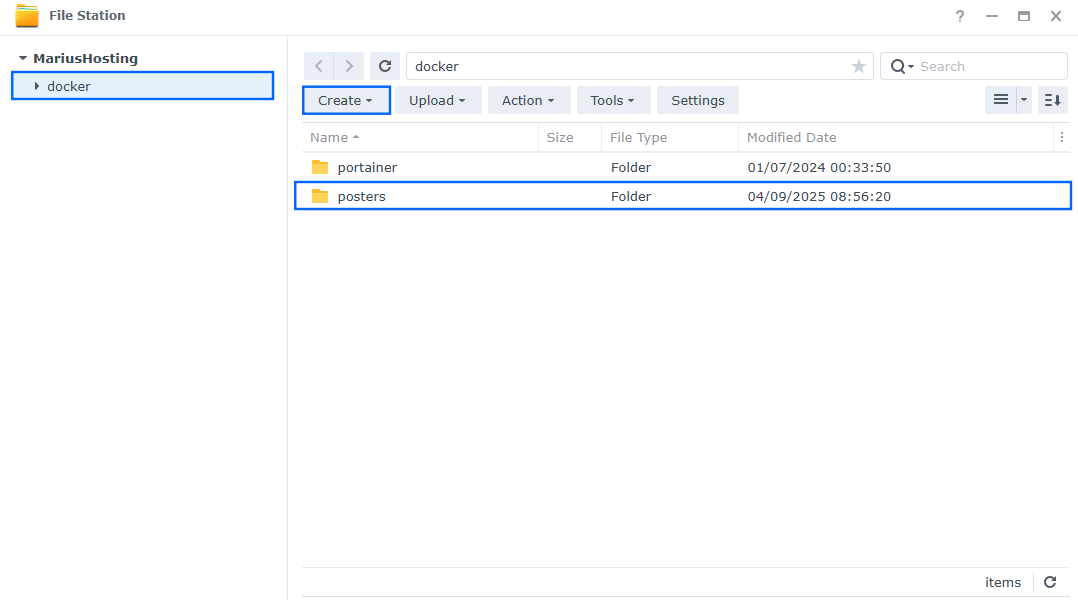
STEP 4
Now create five new folders inside the posters folder that you have previously created at STEP 3 and name them collections, data, movies, tv-seasons, tv-shows. Follow the instructions in the image below.
Note: Be careful to enter only lowercase, not uppercase letters.
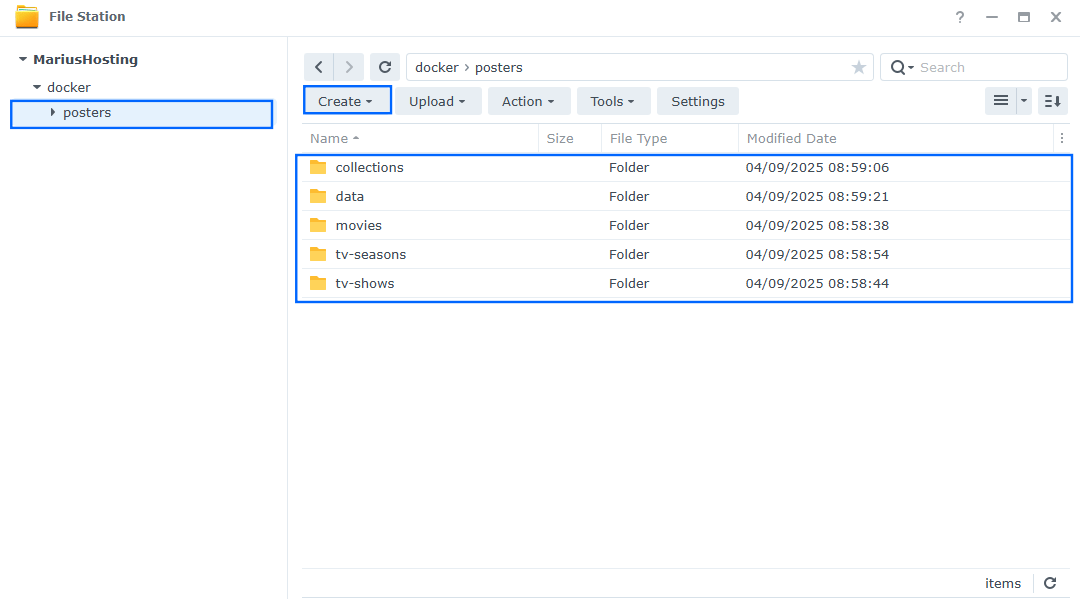
STEP 5
Log into Portainer using your username and password. On the left sidebar in Portainer, click on Home then Live connect. Follow the instructions in the image below.
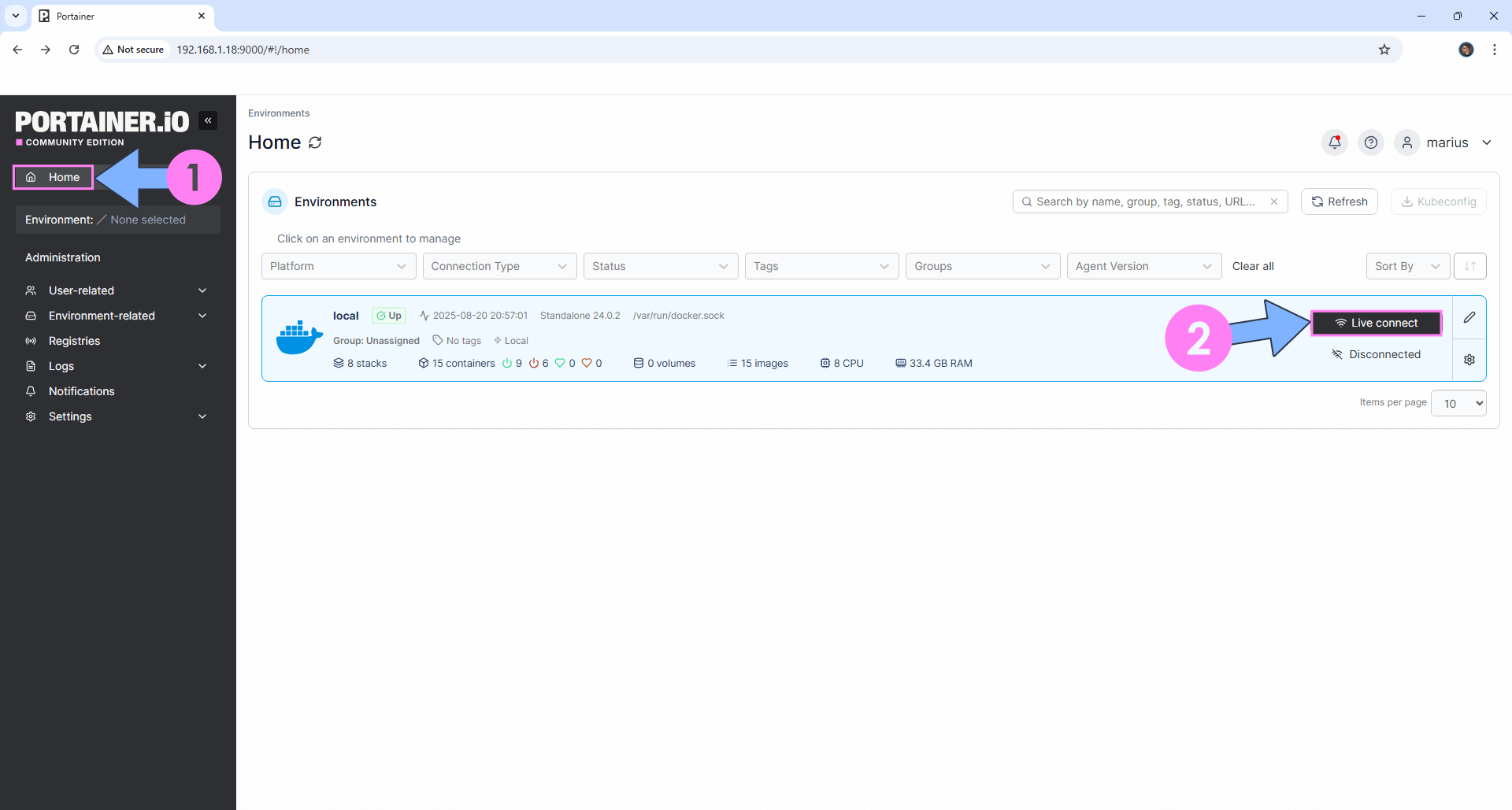
On the left sidebar in Portainer, click on Stacks then + Add stack. Follow the instructions in the image below.
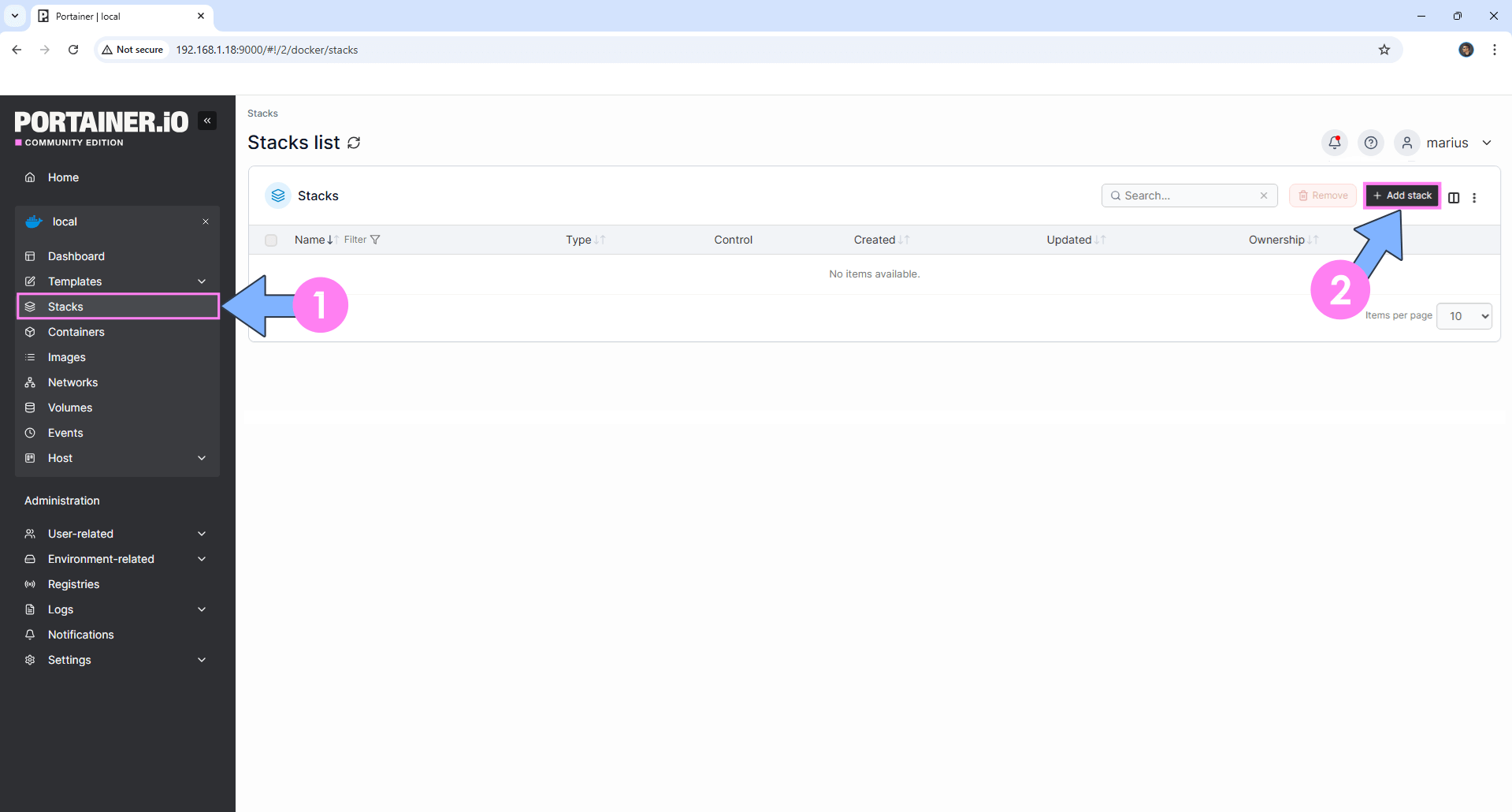
STEP 6
In the Name field type in posteria. Follow the instructions in the image below.
services:
posteria:
image: bozodev/posteria:latest
container_name: Posteria
healthcheck:
test: timeout 10s bash -c ':> /dev/tcp/127.0.0.1/80' || exit 1
interval: 10s
timeout: 5s
retries: 3
start_period: 90s
ports:
- 1818:80
environment:
SITE_TITLE: Posteria
AUTH_USERNAME: marius
AUTH_PASSWORD: mariushosting
SESSION_DURATION: 3600
IMAGES_PER_PAGE: 24
MAX_FILE_SIZE: 5242880
PLEX_SERVER_URL: #http://192.168.1.18:32400 #Change with http:// your NASIP followed by :32400 #Plex Address
PLEX_TOKEN: #Your_Plex_LINK_TOKEN
JELLYFIN_SERVER_URL: #http://192.168.1.18:8096 #Change with http:// your NASIP followed by :8096 #Jellyfin Address
JELLYFIN_API_KEY: #Your Jellyfin API KEY
PLEX_REMOVE_OVERLAY_LABEL: false # Set to true for Kometa compatibility.
IGNORE_ARTICLES_IN_SORT: true # Set to false to sort with articles (A, An, The) included.
SORT_BY_DATE_ADDED: false # Set to true to sort by Recently Added date in Plex instead of Alphabetically.
AUTO_IMPORT_ENABLED: false # Enable/disable auto-import.
AUTO_IMPORT_SCHEDULE: 1h # Schedule 24h, 12h, 6h, 3h, 1h.
AUTO_IMPORT_MOVIES: false # Import Movie posters.
AUTO_IMPORT_SHOWS: false # Import TV Show posters.
AUTO_IMPORT_SEASONS: false # Import TV season posters.
AUTO_IMPORT_COLLECTIONS: false # Import Collection posters.
volumes:
- /volume1/docker/posters/movies:/var/www/html/posters/movies:rw
- /volume1/docker/posters/tv-shows:/var/www/html/posters/tv-shows:rw
- /volume1/docker/posters/tv-seasons:/var/www/html/posters/tv-seasons:rw
- /volume1/docker/posters/collections:/var/www/html/posters/collections:rw
- /volume1/docker/posters/data:/var/www/html/data:rw
restart: on-failure:5
Note: Before you paste the code above in the Web editor area below, change the value for AUTH_USERNAME. Type in your own Username. You will need this username later at STEP 10.
Note: Before you paste the code above in the Web editor area below, change the value for AUTH_PASSWORD. Type in your own Password. You will need this password later at STEP 10.
Note: Before you paste the code above in the Web editor area below, change the value for PLEX_SERVER_URL. Type in your Plex Address http:// your NASIP followed by :32400 without # at the beginning.
Note: Before you paste the code above in the Web editor area below, change the value for PLEX_TOKEN and type in your own Plex Token.
Note: Before you paste the code above in the Web editor area below, change the value for JELLYFIN_SERVER_URL. Type in your Jellyfin Address http:// your NASIP followed by :8096 without # at the beginning.
Note: Before you paste the code above in the Web editor area below, change the value for JELLYFIN_API_KEY and type in your own Jellyfin API Key.
Note: If you don’t use Plex, you can only add your JELLYFIN_SERVER_URL and JELLYFIN_API_KEY and viceversa. It depends on what the user is using, Jellyfin or Plex.
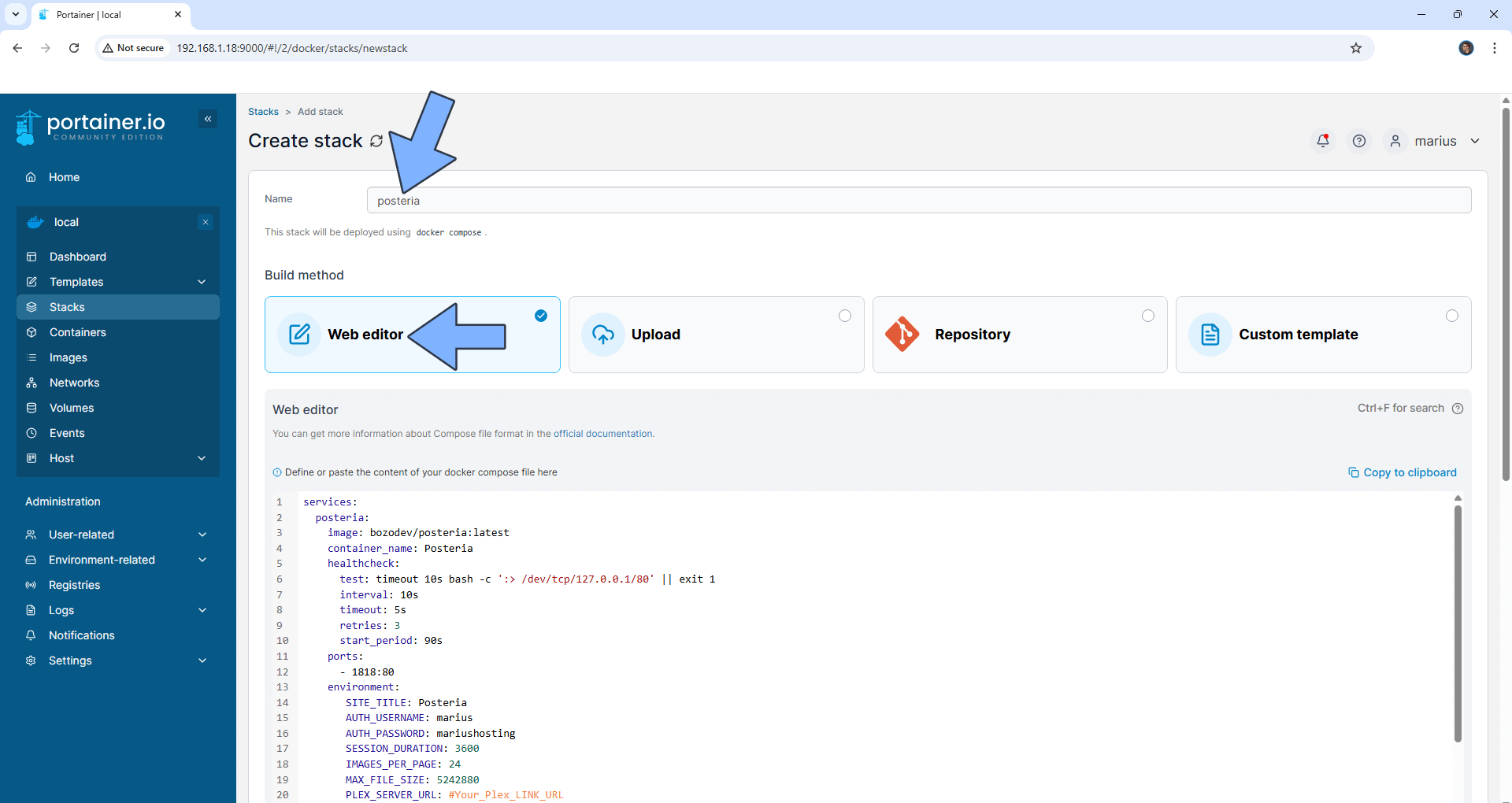
STEP 7
Scroll down on the page until you see a button called Deploy the stack. Click on it. Follow the instructions in the image below. The installation process can take up to a few minutes. It will depend on your Internet speed connection.
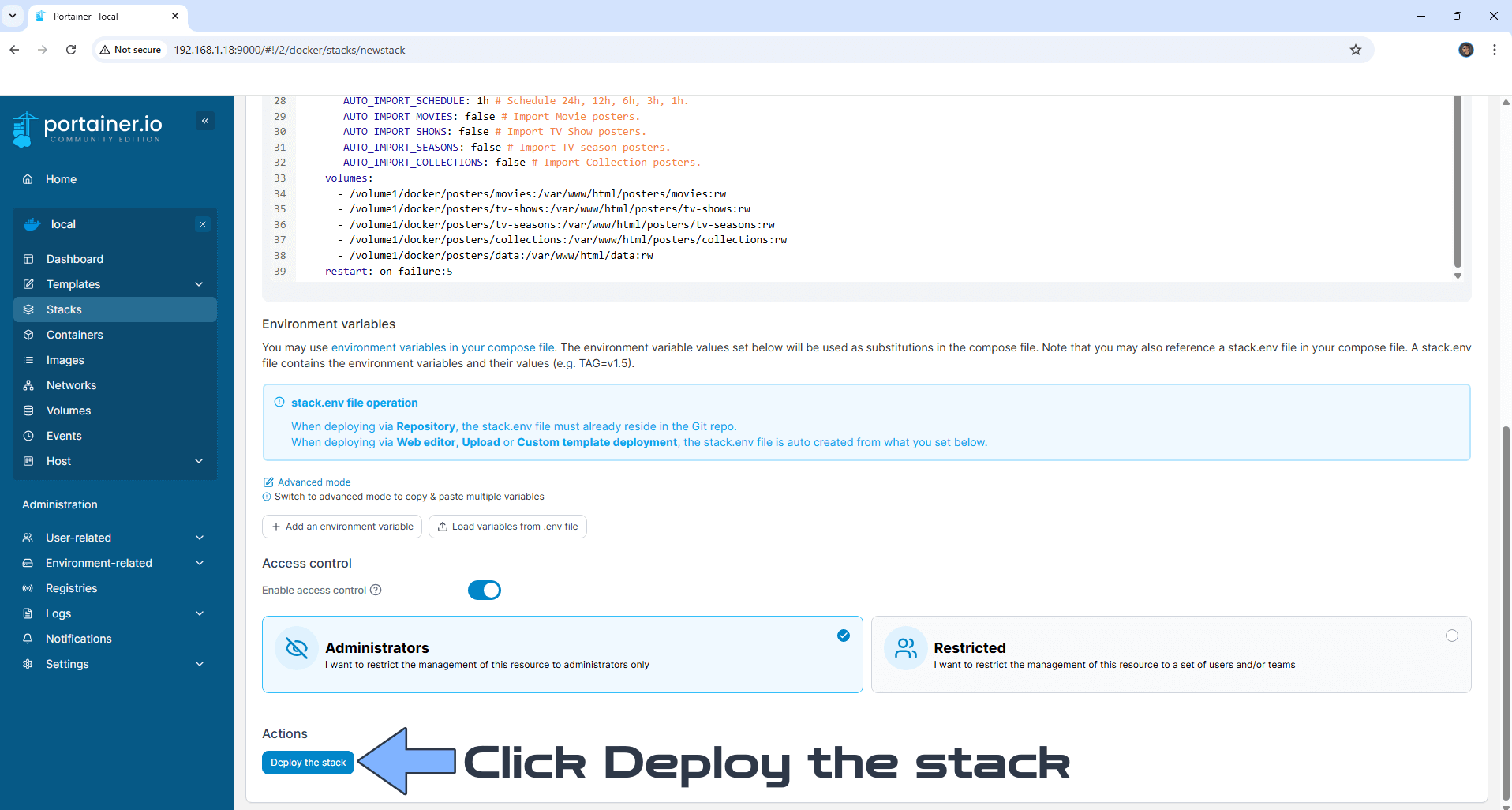
STEP 8
If everything goes right, you will see this message at the top right of your screen: “Success Stack successfully deployed“.
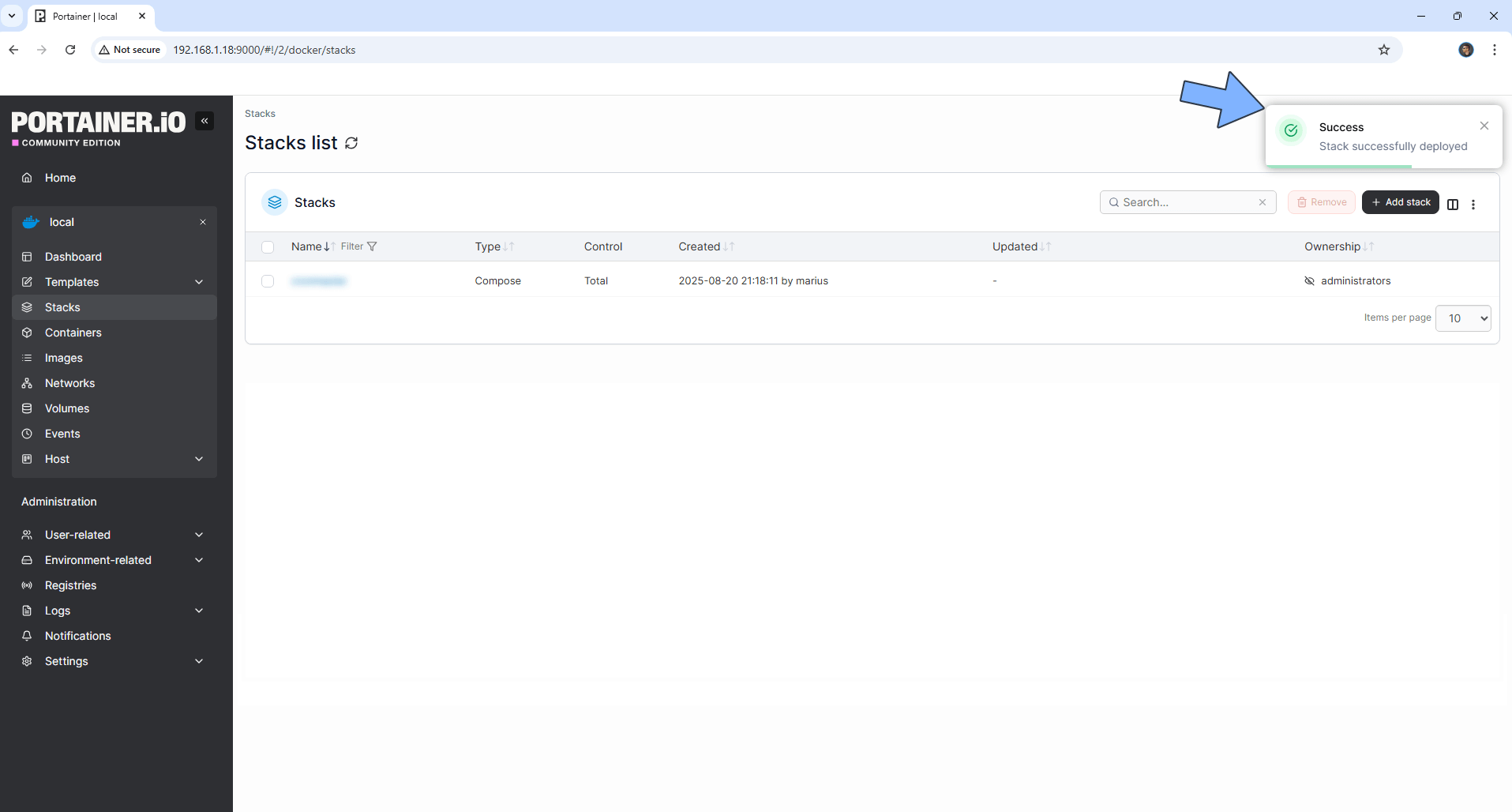
STEP 9
🟢Please Support My work by Making a Donation. Almost 99,9% of the people that install something using my guides forget to support my work, or just ignore STEP 1. I’ve been very honest about this aspect of my work since the beginning: I don’t run any ADS, I don’t require subscriptions, paid or otherwise, I don’t collect IPs, emails, and I don’t have any referral links from Amazon or other merchants. I also don’t have any POP-UPs or COOKIES. I have repeatedly been told over the years how much I have contributed to the community. It’s something I love doing and have been honest about my passion since the beginning. But I also Need The Community to Support me Back to be able to continue doing this work.
STEP 10
The installation process can take up to a few seconds/minutes. It will depend on your Internet speed connection. Now open your browser and type in http://Synology-ip-address:1818 Click Login. Type in your own Username (AUTH_USERNAME) and Password (AUTH_PASSWORD) that you have previously added at STEP 6, then click Login. Follow the instructions in the image below.

STEP 11
Your Posteria Dashboard at a glance!

Enjoy Posteria!
Note: If you want to run the Posteria container over HTTPS, check How to Run Docker Containers Over HTTPS. In order to make Posteria work over https, it’s also mandatory to set up WebSocket.
If you encounter issues by using this container, make sure to check out the Common Docker issues article.
Note: Can I run Docker on my Synology NAS? See the supported models.
Note: How to Back Up Docker Containers on your Synology NAS.
Note: Find out how to update the Posteria container with the latest image.
Note: How to Free Disk Space on Your NAS if You Run Docker.
Note: How to Schedule Start & Stop For Docker Containers.
Note: How to Activate Email Notifications.
Note: How to Add Access Control Profile on Your NAS.
Note: How to Change Docker Containers Restart Policy.
Note: How to Use Docker Containers With VPN.
Note: Convert Docker Run Into Docker Compose.
Note: How to Clean Docker.
Note: How to Clean Docker Automatically.
Note: Best Practices When Using Docker and DDNS.
Note: Some Docker Containers Need WebSocket.
Note: Find out the Best NAS Models For Docker.
Note: Activate Gmail SMTP For Docker Containers.
This post was updated on Friday / August 22nd, 2025 at 12:54 AM
